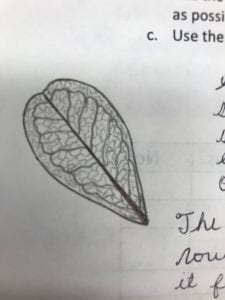Lab 14 (04/25/19): Revising
Objective:
The objective of this lab was to be able to review the information. This lab was also useful to be able to collect all the information into one spread so all the information can be compared to each other. This lab was also used to have one more review over abstracts and posters.
Procedure:
In order to be able to do this we had to use the information that we had previously recorded and add that to a group excel sheet. In order to revise the documents that we had to submit we had to open them and revise them as a group in order to be able to make as many correction as we could.
Conclusion:
In conclusion this lab was useful to put all of our metadata in one place so that it may be easily accessible. Editing our abstract and poster, was useful because it ensures that our information is reliable and well written.
Future Observations:
Having this lab to revise and edit our information is helpful because it remind us that revision is something that needs to be done constantly. Therefore, this lab is something that will keep us in the habit of revising and editing constantly
Metadata
Name: Jessica Mann
Section: 25
Group: 1
Soil ID: JGM25_1Sp19
GPS location: -97.1200, 31.5500
Tree species: unknown
BDH: 11.43 cm
pH: 7
Soil texture: silt
Extraction method: Chelex
DNA concentration: 78.0
Volume ul: 100
PCR: –
Soil Label: JGM25S19
Abstract and Title
Soil eDNA and Ciliate Culture DNA Extraction and PCR Amplification
Abstract
Not much research has been done on the topic of soil ciliates. Therefore, a thorough research experiment on the study of soil ciliates’ DNA is necessary. This experiment was conducted to determine the diversity of ciliates from soil samples collected from the rhizosphere of different trees on the Baylor campus. We collected the metadata of the samples, such as tree and soil type, location, soil pH and percent water content. The silica bead eDNA extraction protocol and the Chelex DNA extraction from Ciliate culture were run on separate samples. We then ran gel electrophoresis, quantified the extracted DNA using Nanodrop and attempted to amplify the 18sV4 region using PCR. Gel electrophoresis yielded DNA bands for both extraction methods, however the gel run from the PCR reaction failed to produce results for either sample. Nanodrop showed that there were higher DNA concentrations for the silica bead extraction sample compared to the Chelex extraction samples. Due to the negative results for PCR amplification, DNA sequencing will not be performed on these samples.






